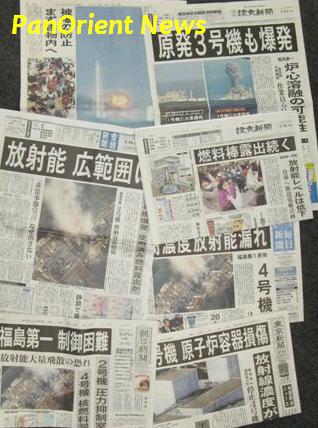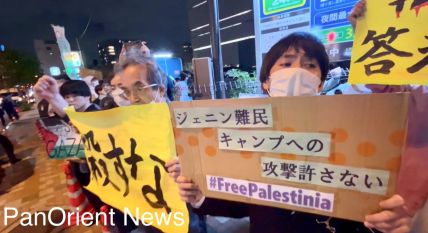|
|
Environment
Japanese Nuclear Accident May Reach Worst Level: U.S. Think Tank Warns
Wednesday, March 16, 2011

Tokyo- (PanOrient News) The situation at the quake-hit Fukushima No. 1 nuclear power plant in northeastern Japan "has worsened considerably and might reach the worst level on an international scale of zero to seven, according to U.S. think tank.
The Institute for Science and International Security (ISIS) said in a statement that the current situation "is now closer to a level 6, and it may unfortunately reach a level 7."
"The explosion in the Unit 2 reactor, the third so far, and the fire in the spent fuel pond in the reactor building for Unit 4 means that this accident can no longer be viewed as a level 4 on the International Nuclear and Radiological Events (INES) scale that ranks events from 1 to 7. A level 4 incident involves only local radiological consequences. This event is now closer to a level 6, and it may unfortunately reach a level 7." the statement said.
A level 6 event means that consequences are broader and countermeasures are needed to deal with the radioactive contamination. A level 7 event would constitute a larger release of radioactive material, and would require further extended countermeasures, ISIS said.
Japan's Nuclear and Industrial Safety Agency rated the accident at level 4 in a preliminary assessment. The 1986 Chernobyl accident was rated level 7 and the 1979 Three Mile Island accident was given level 5.
The Institute for Science and International Security called on the international community to increase assistance to Japan to both contain the emergency at the reactors and to address the wider contamination, "We need to find a solution together."
Meanwhile, the Japanese science ministry said on Wednesday that radiation levels about 6,600 times normal were detected on Tuesday at a place 20 kilometers away from a nuclear power plant at the center of Japan's nuclear crisis.
Radiation levels reached 195 to 330 microsieverts per hour in the Fukushima Prefecture town of Namie in radiation monitoring activities for about 10 minutes from 8:40 p.m. Tuesday (11:40 a.m. GMT), the ministry said. The town is about 20 kilometers away from the earthquake-hit Fukushima No. 1 nuclear power plant of Tokyo Electric Power Co., the ministry said.
On Tuesday, the government advised residents within 30 kilometers from the nuclear plant to stay indoors.
At the reported levels, radiation would not reach 100 millisieverts, an amount that could cause harmful effects on the human body, unless people stay outdoors around the clock for 13-21 days on end, the ministry said. The ministry said houses and other residential buildings help shield radiation.
On Wednesday morning, the radiation level at the quake-hit Fukushima No.1 nuclear power plant reached 10 millisievert per hour at one point , possibly due to the damage at its No.2 reactor the day before, the government's nuclear safety agency said.
The maximum level was measured at the plant's front gate at 10:40 a.m. It fell to 6.4 millisievert at 10:45 a.m. and to 2.3 millisievert at 10:54 a.m. but rose again to about 3.4 millisievert as of 11:00 a.m., the Nuclear and Industrial Safety Agency said.
In Tokyo, foreign Embassies and companies are advising their citizens and employees to leave Tokyo to other parts of Japan or to outside the country.
"My company is very sensitive about this nuclear plant incident, and advised to stay out of Tokyo, and secured hotel rooms for me and other colleagues in Osaka," an employee of a foreign corporation told PanOrient News. "We will stay there till the weekend. The Shinkansen (bullet train) was packed today with people heading west."
PanOrient News
© PanOrient News All Rights Reserved.
|
|

